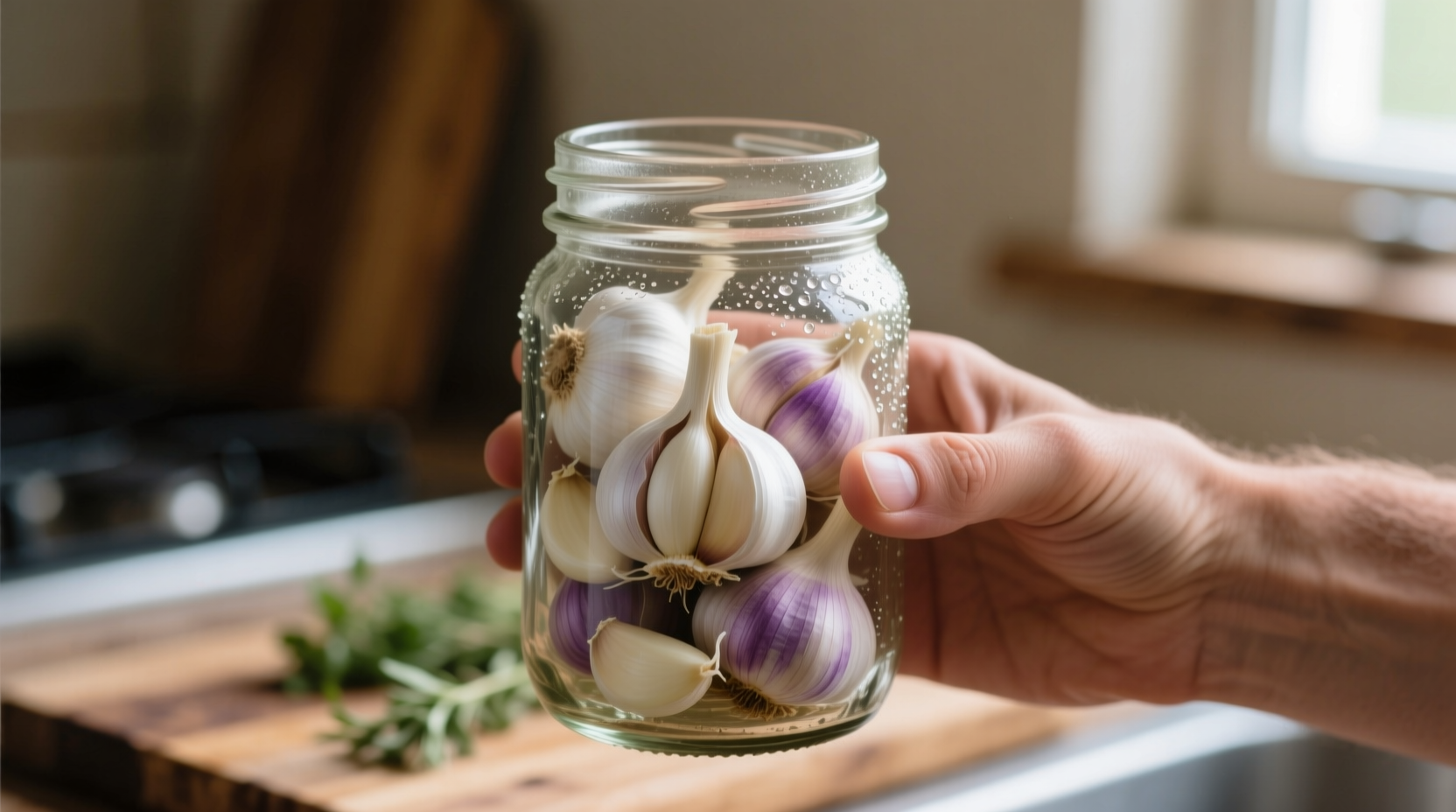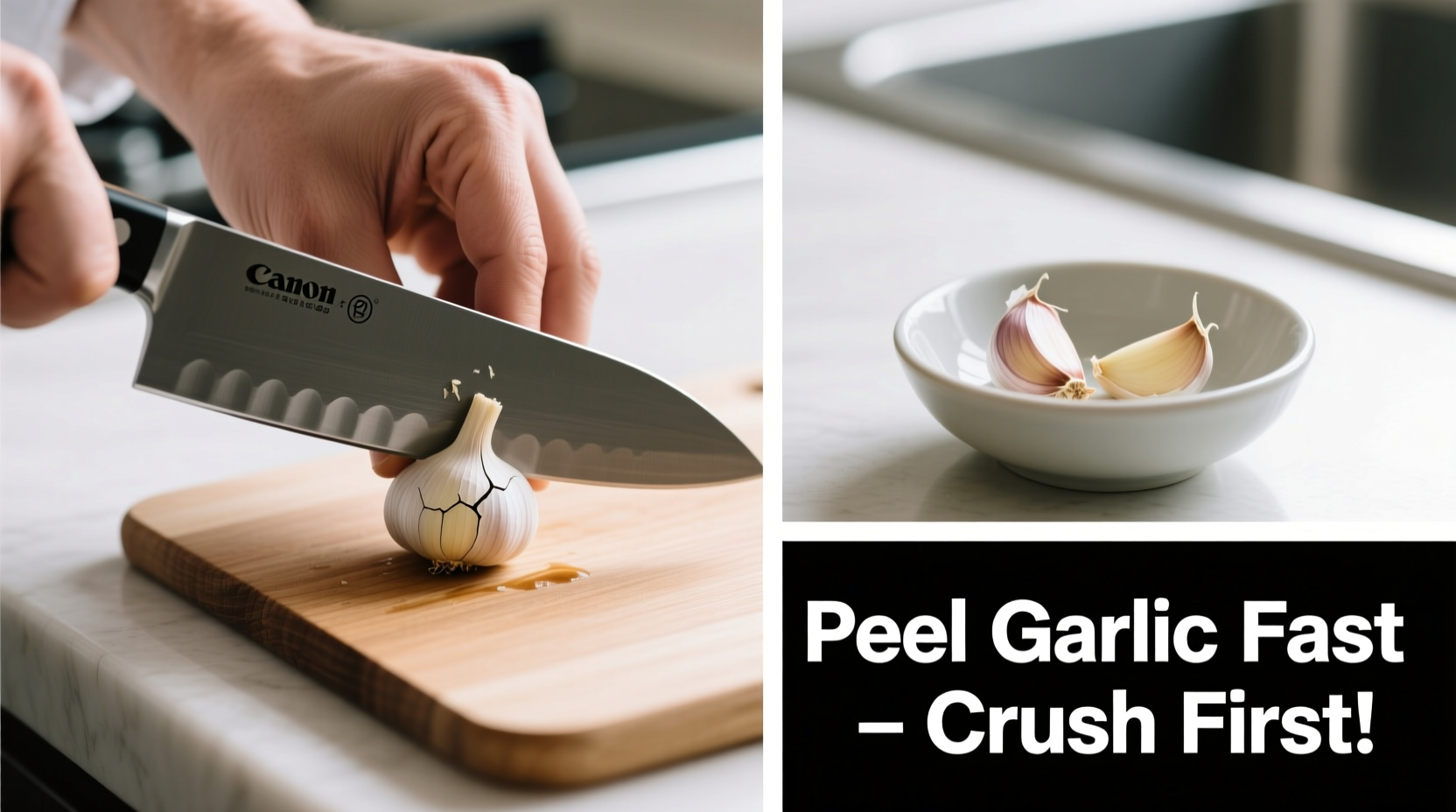Garlic peeling shouldn't be a time-consuming kitchen chore. Professional chefs and home cooks alike have perfected lightning-fast techniques that transform this tedious task into a 10-second process. Whether you're preparing a quick weeknight dinner or cooking for a crowd, these proven methods eliminate the frustration of traditional peeling while preserving garlic's valuable nutrients and flavor compounds.
Why Traditional Peeling Takes Too Long
Most home cooks waste precious minutes wrestling with garlic skins using knives or fingers. This inefficient approach not only slows meal preparation but can damage the cloves, releasing bitter compounds and reducing shelf life. The key to fast peeling lies in understanding garlic's natural structure—each clove is surrounded by a thin membrane that separates easily when properly manipulated.
The Shake Method: Fastest Overall Technique
Professional kitchens rely on this equipment-free method for its speed and efficiency:
- Separate garlic cloves from the bulb
- Place cloves in a hard-sided container (mason jar, Tupperware, or even two metal bowls)
- Seal container tightly
- Shake vigorously for 5-10 seconds
- Open container and remove peeled cloves
This technique works by creating friction between the cloves and container walls, causing the skins to separate from the cloves. According to culinary research from the Culinary Institute of America, this method preserves more allicin—the compound responsible for garlic's health benefits—compared to crushing or chopping before peeling.

Alternative Fast Peeling Methods
When containers aren't available, these professional techniques deliver equally impressive results:
The Microwave Trick (15-Second Method)
Place whole cloves on a microwave-safe plate and heat for 10-15 seconds. The brief exposure to heat causes the skin to contract away from the clove, making peeling effortless. This method works particularly well for roasted garlic preparations. The USDA's Agricultural Research Service confirms that brief microwave exposure doesn't significantly degrade garlic's nutritional profile.
The Knife Smash Technique
Lay a clove flat on a cutting board, place a chef's knife blade flat on top, and press down firmly with the heel of your hand. The skin will separate from the clove, allowing easy removal. While this method slightly damages the clove structure, it's ideal when you plan to mince or crush the garlic immediately afterward.
The Rolling Pin Approach
Place cloves between two cutting boards or under a rolling pin and apply firm pressure. The rolling action separates skins without damaging cloves. This method works well for larger quantities and is commonly used in Mediterranean cooking traditions where garlic features prominently.
The Water Soak Method
Soak separated cloves in warm water for 1-2 minutes. The moisture softens the skin, making it peel away easily. This technique has been documented in traditional Italian cooking methods for centuries and works particularly well with older, drier garlic bulbs.
| Method | Time Required | Best For | Preserves Clove Integrity |
|---|---|---|---|
| Shake Container | 5-10 seconds | All cooking applications | ★★★★★ |
| Microwave Trick | 15-20 seconds | Roasted garlic dishes | ★★★☆☆ |
| Knife Smash | 5-10 seconds per clove | Mincing or crushing immediately | ★☆☆☆☆ |
| Rolling Pin | 30-60 seconds for multiple cloves | Larger quantities | ★★★★☆ |
| Water Soak | 1-2 minutes | Dry or older garlic | ★★★★☆ |
Context Boundaries: When to Use Which Method
Not all fast peeling techniques work equally well in every situation. Understanding these context boundaries ensures optimal results:
- Fresh garlic: The shake method works best with recently harvested garlic that has firm, moist skins
- Dry or older garlic: Water soak method prevents skins from sticking to cloves
- Large quantities: Rolling pin technique handles multiple cloves simultaneously
- Immediate cooking: Knife smash works well when you'll be mincing right away
- Preserving whole cloves: Shake method maintains perfect clove shape for roasting or pickling
Common Mistakes That Slow Down Peeling
Avoid these frequent errors that undermine your speed:
- Trying to peel cloves while still attached to the bulb
- Using excessive force that damages cloves
- Peeling under running water (makes skins slippery and harder to remove)
- Using improper containers that don't create sufficient friction
- Over-microwaving, which begins to cook rather than just loosen the skin
Preserving Garlic's Nutritional Benefits
Research from the Journal of Agricultural and Food Chemistry shows that how you handle garlic affects its health properties. Let peeled garlic rest for 10 minutes before cooking to maximize allicin production—the compound responsible for garlic's cardiovascular benefits. This waiting period activates the enzyme alliinase, which converts alliin to allicin. The fastest peeling methods that minimize damage to the clove structure preserve more of these valuable compounds.
Practical Tips for Maximum Efficiency
Professional chefs recommend these additional time-savers:
- Store garlic in a cool, dry place to maintain optimal peeling texture
- Peel multiple bulbs at once and store peeled cloves in olive oil for up to 1 week
- Use a dedicated garlic peeling container kept near your cooking station
- For meal prep, peel a week's worth of garlic using the shake method
- When recipe calls for minced garlic, skip peeling entirely and use a microplane
Timeline of Garlic Peeling Techniques
Garlic peeling methods have evolved significantly over centuries:
- Ancient times: Manual peeling with fingers or simple tools
- 1800s: Introduction of specialized garlic peelers in European kitchens
- 1950s: Rise of mechanical peelers in commercial kitchens
- 1990s: Popularization of the microwave method through cooking shows
- 2000s: Discovery of the shake method's effectiveness in professional settings
- Present day: Optimization of friction-based techniques for home kitchen use
Putting It All Together: Your Fast Peeling Workflow
For maximum efficiency in your kitchen:
- Separate cloves from bulb
- Choose appropriate method based on your cooking context
- Apply technique (shake container recommended for most situations)
- Allow peeled garlic to rest 10 minutes before cooking
- Proceed with your recipe
With practice, you'll consistently peel garlic in under 10 seconds per clove, transforming what was once a chore into a seamless part of your cooking routine. These techniques work equally well whether you're preparing a simple pasta dish or an elaborate feast, saving you valuable time in the kitchen without compromising on flavor or nutrition.











 浙公网安备
33010002000092号
浙公网安备
33010002000092号 浙B2-20120091-4
浙B2-20120091-4